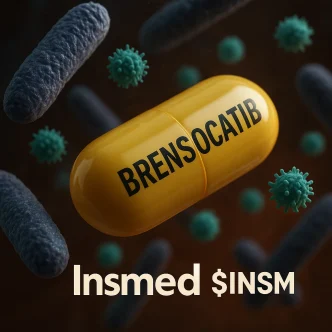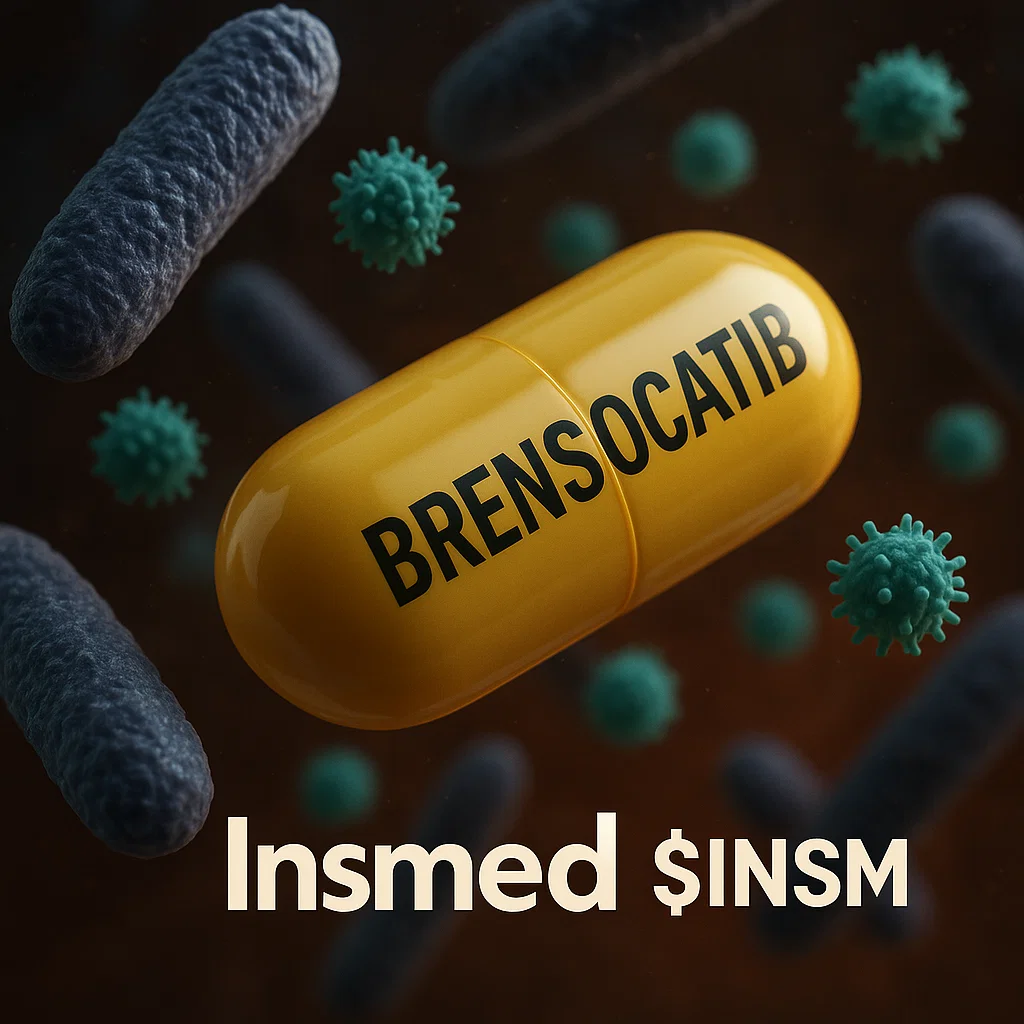Why Investing in Insmed (INSM) Could Pay Off in 2025: A Deep Dive into ARIKAYCE, Brensocatib, and TPIP
Insmed Inc. (ticker: INSM) is a NASDAQ-listed firm that remains one of the most talked-about companies in the biopharmaceutical sector. In its May 2025 investor presentation, the company demonstrated consistent progress toward its strategic goals — a critical strength amid growing global interest in treatments for rare and chronic lung diseases.
This article offers a business-focused look at Insmed’s core products, global growth strategy, and investment potential, helping individual and institutional investors evaluate why INSM may deserve a place in their biotech portfolios.
ARIKAYCE: A Proven Commercial Success in the Clinic
Case example: A patient in Chicago suffering from a chronic MAC infection saw their lung function stabilize and improve for the first time in five years after 12 months of ARIKAYCE therapy. These clinical results validate broader trial data and have strengthened physician and patient confidence.
- ARIKAYCE, Insmed’s flagship product, is the first and only FDA-approved therapy for refractory MAC infections in patients who fail standard regimens.
- It is a liposomal formulation of amikacin delivered via inhalation.
- The drug is currently commercialized in the US, Europe, and Japan, and revenue continues to grow steadily.
- Post-marketing studies are underway under the FDA’s accelerated approval program and could enable expanded indications, further enlarging the market opportunity.
Key takeaway: ARIKAYCE is a rare example of a biotech product that is both clinically validated and commercially viable — providing a stable revenue stream that supports Insmed’s broader pipeline.
Brensocatib and TPIP: High-Potential Assets Nearing the Finish Line
Insmed is advancing two late-stage assets — Brensocatib and TPIP — that may redefine the treatment of serious pulmonary conditions.
Brensocatib: Addressing the Root Cause of Airway Inflammation
- Brensocatib is an oral DPP1 inhibitor designed to block neutrophil proteases, which play a central role in airway inflammation.
- It targets non-cystic bronchiectasis (NCB) — a debilitating, underserved condition.
- Unlike existing therapies that manage symptoms, Brensocatib targets the underlying cause of inflammation.
- Phase 3 trials are nearing completion, with early data indicating strong efficacy.
TPIP: A Convenient and Long-Acting Option for PAH
- TPIP (Treprostinil Palmitil Inhalation Powder) is a long-acting dry powder formulation for treating pulmonary arterial hypertension (PAH).
- Benefits include greater convenience, improved patient adherence, and sustained therapeutic effects.
- Phase 2b results (Summer 2025) showed improved vascular function and better tolerability versus traditional treprostinil forms.


Conclusion: Both drugs have blockbuster potential. If approved, they could not only enter the market but reshape treatment standards, opening the door for significant market cap expansion for INSM in the next 1–3 years.
Scaling Globally: Insmed’s Strategic Growth Plan
Insmed is not just a promising pipeline company — it is a biotech with commercial discipline and global ambition. In 2025, the company has demonstrated strategic maturity, focusing on both pipeline execution and global expansion.
Key strategic priorities:
- Expanding indications for ARIKAYCE
- Launching Brensocatib and TPIP in the US, Europe, and Asia
- Partnering with global contract manufacturing organizations
- Entering new growth markets such as South America, the Middle East, and South Korea
- Investing in digital infrastructure and personalized care platforms
Why it matters: As regulatory approvals approach, demand may surge. Insmed’s investments in quality control and scalable production position it to capitalize on global rollout efficiently.
Financial Structure and Market Valuation
“We are confident that Brensocatib has the potential to become the first-in-class therapy to fundamentally change the treatment approach for non-cystic bronchiectasis. We’ve invested significant resources to demonstrate its efficacy and safety,” said William Lewis, CEO of Insmed, during his presentation at the Goldman Sachs Healthcare Conference in June 2025.
“The innovative profile of TPIP makes it stand out among competitors. We see strong potential for its use not only in pulmonary arterial hypertension but also across other vascular pathologies,” added Dr. Sarah Whitmore, Chief Scientific Officer of the company.
Comparison of Insmed (INSM) with Peer Biopharmaceutical Companies
| Company | Ticker | Market Cap | Product Stage | Therapeutic Focus |
|---|---|---|---|---|
| Insmed | INSM | ~$18.3 billion | Phase 3 / Commercialized | MAC, bronchiectasis, PAH |
| United Therapeutics | UTHR | ~$11.5 billion | Commercialized | Pulmonary arterial hypertension |
| Liquidia Corp. | LQDA | ~$0.7 billion | Phase 3 | Pulmonary arterial hypertension |
| Vertex Pharmaceuticals | VRTX | ~$110 billion | Commercialized | Cystic fibrosis, genetic diseases |
Key Financial Metrics for Insmed (INSM)
| Metric | Value (as of July 2025) |
|---|---|
| Market Capitalization | ~$18.3 billion USD |
| Share Price | ~$96.95 USD |
| Average Analyst Price Target | $108 USD |
| Market Cap Growth (12-month) | +30% |
| ARIKAYCE Sales Volume (latest report) | ~$280 million USD (annualized) |
| Brensocatib Clinical Trial Phase | Final stage of Phase 3 |
| TPIP Clinical Trial Phase | Phase 2b completed |
| Key Risks | Regulatory delays, competition |
Although Insmed (INSM) has not yet achieved operational profitability, its financial model continues to attract strong investor interest. The company’s lead product, ARIKAYCE, generates stable cash flow, forming a reliable foundation for ongoing operations. Upcoming product launches — particularly Brensocatib and TPIP — have the potential to significantly boost future revenue streams.
Insmed also benefits from several important financial advantages:
- It utilizes accumulated net operating losses (NOLs) to optimize its effective tax burden.
- The company maintains a healthy liquidity position and flexible access to capital, allowing it to adapt efficiently to changing market conditions.
- Over the past 12 months, INSM’s market capitalization has grown by more than 30%, underscoring rising investor confidence and favorable sentiment.
According to consensus estimates from Bloomberg and Jefferies, the average price target for INSM shares exceeds $100, implying further upside potential in the near term.
Moreover, INSM has earned recognition among institutional investors: its shares have been included in the portfolios of several prominent biotech-focused funds, including the ARK Genomic Revolution ETF and iShares Biotechnology ETF — a strong vote of confidence in the company’s long-term prospects.
Key events on the horizon over the next 12 months:
- Publication of Phase 3 results for Brensocatib (expected in Q4 2025)
- Potential start of Phase 3 for TPIP
- Receipt of full FDA approval for ARIKAYCE based on post-marketing studies
- Possible strategic partnership or deal with a major pharmaceutical company
- Expansion into new geographic markets (including South Korea and the Middle East)
An examination of the investment in Insmed (INSM) raises a key question: Should you invest in Insmed in 2025? With its leading drug candidates nearing late-stage regulatory milestones, the persistent global need for rare disease treatments, and growing institutional interest, Insmed is increasingly seen as a strong biotech investment opportunity. This is especially relevant today, as the pharmaceutical industry continues to prioritize high-margin, medically significant niches.
Thanks to its maturity, strategic clarity, and well-balanced product portfolio, Insmed distinguishes itself within the evolving biotech landscape — one that is attracting growing attention from both venture capital and public market investors. The company combines scientific innovation with commercial execution, offering a rare dual engine for value creation: revenue from an already marketed product and the potential upside from future launches. For long-term biotech investors in 2025, Insmed represents a compelling and relatively de-risked opportunity to access key therapeutic segments in rare and chronic respiratory diseases.
Insmed is managed with scientific rigor and operational discipline. Its pharmaceutical portfolio includes ARIKAYCE — a commercially validated treatment — as well as two pipeline assets, Brensocatib and TPIP, which may set new standards in pulmonary medicine. Shares of INSM are publicly traded on NASDAQ and are accessible to both private investors and large institutions. The company’s transparency, thoughtful risk management, and global expansion strategy make it one of the most promising names in its sector.
Rising interest from the retail community is evident in growing search volume for terms like “buy Insmed shares,” “biotech investments 2025,” and “INSM stock forecast.” If clinical trials for Brensocatib and TPIP yield positive results, Insmed could further strengthen its competitive position and deliver substantial shareholder value. Today’s INSM investors aren’t just backing a promising biotech company — they’re aligning themselves with the next phase in the evolution of respiratory care.














